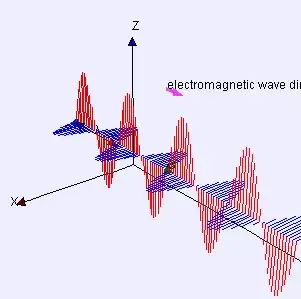A wave is a sustained disturbance produced at a point in a medium(or field) and is transmitted to other parts of the medium(or field) without the actual translatory motion of the particles.
This definition of a wave helps me to understand mechanical waves. I imagine a stream of particles arranged in a line. When one of the particles vibrates about its mean position, then the adjacent particle(s) will also do the same (but with a phase difference) since they are connected by inter particular forces of attraction(bond forces). Thus at a broad level we can see a wave propagating while at the particulate level we can see the Simple Harmonic Motion of individual particles. But I am struggling to understand other waves like matter waves, electron waves and light waves. In high school books they are shown as curved lines as if a particles is always following that path. But I believe that that is not true. Which model should I imagine to understand these waves(especially matter waves)? What exactly is "oscillating" in matter waves?
Addendum
After doing a lot of research, I arrived at a conclusion.
Imagine two devices that can measure any physical quantity. Keep one of the devices at any position in the field region and the other device immediately after it. If for any position, the value of a physical quantity displayed oscillates between minimum and maximum values and the two devices do not simultaneously display the same value then there exists a 'wave' of that physical quantity in that region. Amplitude is given by the difference of maximum value(global) and mean value(global) displayed. Wavelength is given by the minimum distance in which the other device has to be placed so that the two devices simultaneously show the same value.
Are my conclusions correct?
